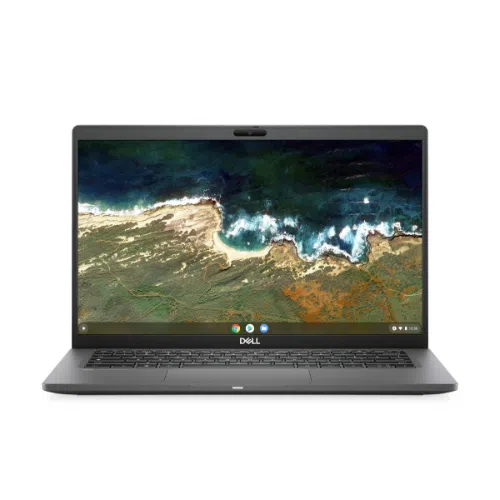If you own a laptop, you’re probably familiar with the OS (Operating System) and the kind present in your laptop. It can be Windows, macOS, or Linux. What you may not know is how this operating system directly affects your computer.
Every laptop needs something called an operating system (OS); without it, the laptop is like a car with no steering wheel. The engine (processor, RAM, battery) may be there, but you can’t control or use it.
Here’s all you should know about laptop operating systems, which laptops can run them, and why some laptops can’t.
What Is an Operating System?
Think of your laptop as a car. The hardware: keyboard, screen, battery, and processor are the tyres, steering, and engine. But without a driver, the car can’t move. The operating system is that driver.
Just as the name implies, it determines how your system operates and tells your laptop how to behave. When you click on Microsoft Word, it’s Windows that opens it. When you plug in your phone to transfer music, it’s Windows that helps your laptop recognise it. Even the “Start” button at the bottom left of your screen is part of Windows. Without an operating system, your laptop would just sit there like a car without fuel or a driver.
The three most common operating systems you’ll hear about are:
-
Windows (by Microsoft)
-
macOS (by Apple, used only on MacBooks)
-
Linux (open-source, free, and more customisable)
Let’s go into each one.
Windows in Laptops
Windows is the most common OS in Nigeria. HP, Dell, Lenovo, Acer, Asus, all these laptops mostly come with Windows pre-installed, and compatibility depends mostly on the processor generation.
Microsoft had different Windows versions (7, 8, 10, 11) and updates them from time to time, releasing new versions:
-
Windows 7 – Released in 2009, Windows 7 was loved for being simple and easy to use. It gave us the familiar desktop and start menu. For many Nigerians, Windows 7 laptops were their first real computer experience. Microsoft stopped supporting Windows 7 in 2020. That means no more security updates. Using it today is like driving a car without insurance or spare parts; it might still move, but you’re exposed to risks.
-
Windows 8 and 8.1 – In 2012, Microsoft introduced Windows 8, which came with colourful “tiles” instead of the traditional start menu. It was built for touchscreen laptops and tablets. Many people didn’t like the drastic change, so Microsoft quickly released Windows 8.1 in 2013 to fix some complaints.
-
Windows 10 – Windows 10 arrived in 2015 and combined the best parts of Windows 7 and 8. It brought back the familiar start menu but kept features like quick search and improved security. It also has a balanced design, Cortana (voice assistant), strong security, and better multitasking. It quickly became the most widely used version worldwide, and in Nigeria, most affordable laptops from 2016 to 2021 came with Windows 10 pre-installed.
-
Windows 11 – Launched in 2021, Windows 11 is the most recent version. It has rounded corners, a cleaner look, and features designed for modern laptops. It has a modern design, Android app support, better gaming, and requires a TPM 2.0 security chip.
What Determines If a Laptop Can Run a Windows Version?
Some factors decide what version of Windows a laptop can run it can run:
-
Processor generation (CPU): Some Windows versions require a certain generation of processors to function. For instance, Windows 11 requires at least an 8th Gen Intel processor or AMD Ryzen 2000 series.
-
RAM: Windows 10, for example, needs a minimum of 4GB RAM (8GB is better) to run efficiently on a laptop.
-
Storage: Windows 11 needs at least 64GB of storage. A laptop with a 32GB hard drive simply won’t cope.
-
Security chips (TPM 2.0 & Secure Boot): Windows 11 insists on these for better security. Older laptops don’t have them.
So, before you update your windows, make sure they fulfill those requirements for the version of Windows you are updating.
Dell Latitude 7410 (10th-Gen Intel® Core™ i5, 256 GB SSD, 16 GB RAM, Windows 10 Pro) – This sleek 14-inch business laptop comes with a powerful 10th-generation Intel Core i5 processor, a speedy 256 GB solid-state drive, 16 GB of RAM, a backlit keyboard, webcam, Bluetooth, and Windows 10
Photo: Dell Latitude 7410
Dell Latitude 7410
Shop PC Place
macOS in Laptops
Now let’s move to Apple’s world. MacOS is tied to hardware generation. MacBooks don’t run Windows by default. They run macOS, Apple’s own operating system. Apple designs both the Mac hardware and software, so each MacBook comes with a macOS version optimized for it. MacOS is regularly updated for free, and each update supports only newer models. Just like iPhones stop receiving the latest iOS after a while, older Macs stop receiving the newest macOS.
What Each macOS Added:
-
Big Sur (2020): First to run on Apple Silicon (M1 chip).
-
Monterey (2021): Universal Control (control iPad + Mac with one mouse/keyboard).
-
Ventura (2022): Stage Manager for multitasking.
-
Sonoma (2023): Desktop widgets, gaming improvements.
Each update makes the MacBook smoother, adds features, and improves security.
Apple MacBook Air 13″ (M2, 2022) – A sleek and feather-light 13.6-inch laptop powered by Apple’s M2 chip (8-core CPU, 8-core GPU), paired with 8 GB of unified RAM and a 256 GB SSD. It features a bright Liquid Retina display, MagSafe charging, two Thunderbolt/USB-4 ports, a 1080p webcam, and delivers up to 18 hours of battery life. Ideal for both work and leisure.
Which MacBooks Can Update?
>
